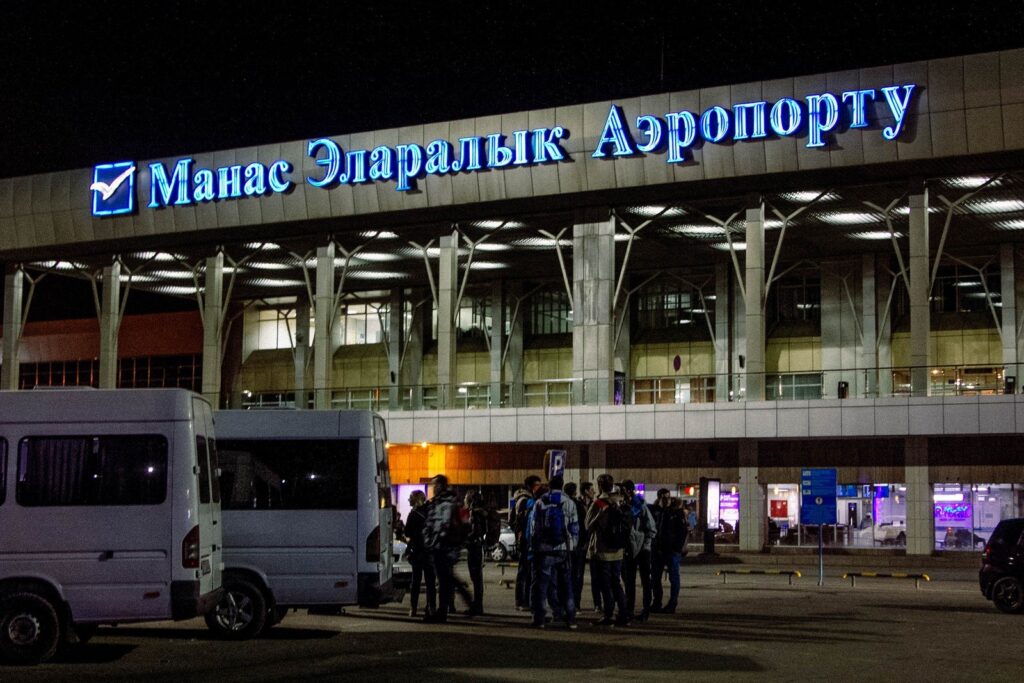| Visa | Not necessary for a stay shorter than 60 days |
| Passport | Valid for at least 6 months after departure from Kyrgyzstan |
| Currency | Kyrgyz SOM (Average 100 KGS is €1) |
| Time difference | GMT+6 |
| Language | Official languages are Russian and Kyrgyz |
| Cash | Paying by card is not possible everywhere, bringing euros or dollars is handy |
| Vaccinations | DTP and Hepatitus A are adviced |
| Electricity | 220V-50Hz |
| Internet connection | The internet connection is slow in most guesthouses and hotels. Local SIM card often works faster |
| Safety | The Ministry of Foreign Affairs reports security risks on the border with Tajikistan. We never go to this area |
| Food and Drinks | A mix of Turkish, Russian and Chinese (Uyghur) cuisine |
| Popular dishes | Pilav, Beshparmak , Lagman, Manti, Kurdak, Shashlik, Koemis |
Kyrgyzstan offers travelers a mix of breathtaking landscapes, rich cultural heritage, and exciting adventures. Here’s your ultimate guide on how to travel to Kyrgyzstan, covering everything from airport arrivals to overland entry, transportation, budget, accommodations, food, language, and safety.
Airport Arrival

1. Manas International Airport (Bishkek): The primary gateway to Kyrgyzstan, located 25 km from the capital, Bishkek. Regular flights from major international hubs make it the most convenient entry point. At the moment the most frequent flights are going to Istanbul. Both Pegasus and Turkish Airlines are flying this route. There are other international arrivals from Dubai (FlyDubai), Abu Dhabi (Wizzair), Almaty (AirAstana), Urümqi (China Southern), Moscow (Aeroflot) and Novosibirsk (S7) Taxis and airport shuttles are available to take you into the city. Taxi fare should be maximum 1000 KGS (10 euros)
2. Osh International Airport: Located in the southern part of the country, Osh Airport serves as an entry point for travelers exploring the Fergana Valley and nearby regions. Taxis and local transport are readily available for transfers to the city center.
Entering Kyrgyzstan Overland
1. From Kazakhstan: The Kordai border crossing near Bishkek is the most popular. Buses and shared taxis operate regularly between Almaty (Kazakhstan) and Bishkek. Another increasingly popular border crossing is the one at Kegen/Karkara. This will be your quickest connection from Almaty to Karakol (and Jyrgalan). You will need a (shared) taxi and prices for a car start at 300 euros. Otherwise you can take a shared taxi from Almaty to Kegen and cross the border by foot. And taking another taxi from the border to Karakol. You will have to fix this ahead, there are no taxis at the border.
2. From Uzbekistan: The Dostuk border crossing near Osh is commonly used. Shared taxis and minibusses provide transport between Tashkent (Uzbekistan) and Osh.
3. From Tajikistan: The Kyzyl-Art Pass is the primary route, especially for those traveling the Pamir Highway. It is recommended to travel in a group or with a tour operator due to the challenging terrain.
4. From China: The Irkeshtam and Torugart Passes are the main crossings. These routes require careful planning and often need permits and visa.
Transportation in Kyrgyzstan
1. Taxis: Widely available in cities and towns. It’s best to agree on the fare beforehand or ensure the meter is used. Yandex taxi is the most popular hailing app.
2. Public Transport (Marshrutka): Minibusses (Marshrutkas) are a popular and cost-effective way to travel within cities and between towns. They follow fixed routes and are frequent.
3. Renting a Car: Offers flexibility, especially for exploring remote areas. Ensure you have an international driving permit.
Travel Budget
Kyrgyzstan is budget-friendly. Daily costs vary based on travel style:
1. Budget Travelers: $20-40/day (hostels, street food, public transport) 2. Mid-range Travelers: $50-100/day (3-star hotels, restaurants, taxis) 3. Luxury Travelers: $150+/day (4-5 star hotels, fine dining, private tours)
Accommodations
1. Hostels and Guesthouses: Affordable and widespread, ideal for budget travelers. 2. Hotels: Range from basic to luxury, found in major cities and tourist areas. 3. Yurts: Unique, traditional lodging available in rural areas and around major trekking routes.
Food
Kyrgyz cuisine is hearty and flavorful. Must-try dishes include Beshbarmak (meat with noodles), Plov (rice dish), and Manty (dumplings). Street food is affordable and delicious. Local markets and bazaars are great places to sample traditional foods.
Language
1. Kyrgyz: The official language. 2. Russian: Widely spoken and understood, especially in urban areas. 3. English: Increasingly spoken by the younger generation and those in the tourism industry.
Safety
Kyrgyzstan is generally safe for travelers. Here are some tips:
1. Stay vigilant in crowded places to avoid pickpocketing. 2. Use registered taxis or rideshare apps for safe transportation. 3. Be cautious when trekking or traveling in remote areas; consider hiring a guide. 4. Keep abreast of local news and travel advisories.
Conclusion
Traveling to Kyrgyzstan is an adventure filled with scenic beauty, rich traditions, and warm hospitality. Whether arriving by air or crossing overland from neighboring countries, you’ll find a variety of transportation options, affordable accommodations, and delicious food. With a bit of planning and an open mind, you’re set for an unforgettable journey through this captivating Central Asian country. For more detailed travel tips and guides, visit our Kyrgyzstan .
